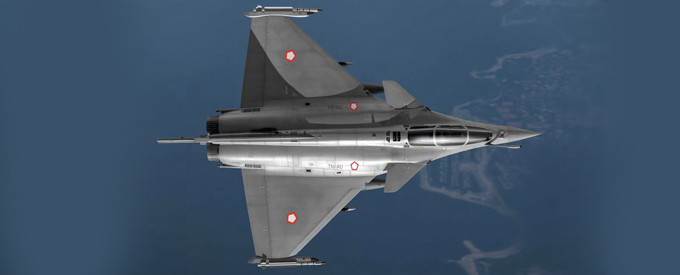2023-10-01
Rafale Propels Indonesia’s Ascent on Varied Fronts
Indonesia embarked on a significant endeavour in February 2022 by signing a contract for the acquisition of 42 Rafale fighter aircraft. This landmark agreement marked a strategic move by the Indonesian National Army Air Force (Tentara Nasional Indonesia Angkatan Udara) to bolster its defence capabilities.
The contract, which came into force in August of the same year, consists of two tranches, with the first tranche of six Rafale entering into service in September 2022, and the second tranche of 18 following suit. This brings the total number of aircraft on order to 24, reflecting Indonesia’s commitment to enhancing its national security.
Industrial Return
One of the most significant advantages of Indonesia’s Rafale acquisition lies in the substantial industrial return the country is poised to gain. This industrial return extends beyond the aeronautical sector, encompassing a broad portfolio of dual technologies that are crafted by Dassault Aviation and its industrial partners, Safran Aircraft Engines, and Thales.
Indonesia’s aeronautical sector is set to experience an unprecedented boost, with the transfer of knowledge, technology, and skills from these global leaders. This infusion of expertise will elevate the country’s aerospace capabilities, fostering growth in both research and development, as well as production capacities.
This collaboration is also a testament to the strategic partnership that Indonesia has established with these renowned aerospace companies. By tapping into the extensive experience of Dassault Aviation, Safran Aircraft Engines, and Thales, Indonesia positions itself as a regional hub for advanced aerospace technology.
Rafale acquisition also entails educational initiatives that aim to cultivate aeronautical know-how within the country. Technical training programmes will be launched to ensure that Indonesian personnel are proficient in operating and maintaining the Rafale fleet. This transfer of knowledge is invaluable, as it empowers the Indonesian military and industry to be self-reliant and self-sufficient.
These educational projects represent an investment in human capital, equipping Indonesians with the skills necessary to safeguard their nation’s security effectively.
As Eric Trappier, Chairman and CEO of Dassault Aviation, pointed out: “This new step consolidates the beginning of a long-term partnership with the Indonesian authorities, whom I would like to thank once again for their confidence. It testifies to the strategic link that unites Indonesia and France, and will be reflected in the growing presence of Dassault Aviation in the country.”
Omnirole Dynamics
One of the standout features of the Rafale fighter aircraft is its exceptional interoperability in the realm of weaponry. This interoperability is ensured by its compliance with Mil-Std-1760 standards, which govern the stores management system. This compliance facilitates the seamless integration of customer-selected weapons into the Rafale’s arsenal.
With its 10-tonne empty weight, the Rafale is fitted with 14 hard points (13 on the Rafale M). Five of them are capable of carrying heavy ordnance or drop tanks. Total external load capacity is more than nine tonnes (20,000 lbs.) “Buddy-buddy” refuelling missions can be carried out in portions of the airspace out of reach of dedicated and vulnerable tanker aircraft.
With its outstanding load-carrying capability and its advanced mission system, the Rafale can carry out air-to-ground strikes as well as air-to-air attacks and interceptions during the same sortie.
It is capable of performing several actions at the same time, such as firing air-to-air missiles during a very low altitude penetration phase: a clear demonstration of the true Omnirole capability and outstanding survivability of the Rafale.
Significant Advancements
The Rafale aircraft introduces significant advancements in reliability, accessibility, and maintainability. Building on the extensive experience gained from the MIRAGE 2000, it extends integrated testability to all aircraft systems, allowing for precise replacements, including electronic circuit boards and specific components, on the flight line.
Human factors engineering, supported by Computer-Aided Three-dimensional Interactive Application (CATIA), enables a single technician to conduct flight line operations efficiently, reducing operation duration and minimising errors.
Its advanced features optimise operations and safety. Its centralised armament safety system reduces errors, enhancing Turn-around Time (TAT). The M88 engine design enables quick replacement, with no need for extensive bench testing, allowing the aircraft to return to flight within an hour, boosting efficiency.
Its self-sufficiency in deployments is achieved with minimal ground support equipment. It includes an onboard oxygen generation system, closed-loop nitrogen cooling for optronics, and a built-in auxiliary power unit for engine startup.
As the Rafale becomes an integral part of the Indonesian Air Force, it symbolises a brighter future, where Indonesia stands tall as a regional leader in self-reliant defence.


No Comments